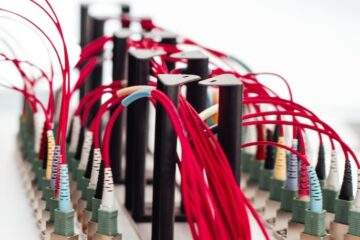Blockchain technology has brought about a new era of decentralized finance and digital asset ownership. With this new paradigm, many users have found themselves in possession of various digital assets, each stored on its own blockchain network. However, transferring these assets between different networks has traditionally been a difficult and costly process. This is where cross-chain bridges come in, providing a solution for seamless token transfers across different blockchain networks. In this blog post, we’ll explore the power of cross-chain bridges and how they work.
What are cross-chain bridges?

Cross-chain bridges are specialized platforms that allow users to transfer digital assets across different blockchain networks. Essentially, they act as a gateway between different networks, facilitating the conversion of tokens from one network to another. By using cross-chain bridges, users can move their digital assets from one network to another, without having to go through traditional exchange services or other intermediaries.
How do cross-chain bridges work?
Cross-chain bridges work by locking digital assets from one blockchain network and then issuing equivalent assets on another network. This process involves a series of steps that vary depending on the specific bridge used. Generally, the process involves depositing assets on the origin network, locking those assets, and issuing equivalent assets on the destination network. This process can be automated through smart contracts or other blockchain technologies, allowing for seamless and quick transfers.
Types of cross-chain bridges
There are several types of cross-chain bridges, each with its own unique features and functionality. Some of the most common types include:
- Atomic Swaps – Atomic swaps are peer-to-peer transactions that allow users to directly trade one digital asset for another across different blockchain networks. This process involves a secure exchange of digital assets without the need for intermediaries or centralized exchanges.
- Wrapped Tokens – Wrapped tokens are tokens that are pegged to the value of an underlying digital asset, but can be used on a different blockchain network. For example, a wrapped Bitcoin token on the Ethereum network can be used for Ethereum-based transactions, while still representing the same value as Bitcoin.
- Centralized Bridges – Centralized bridges are cross-chain platforms that are managed by a centralized entity. These bridges typically involve a trusted third party that manages the transfer of digital assets between different networks.
Benefits of using cross-chain bridges
The use of cross-chain bridges offers several benefits for users, including:
- Interoperability – Cross-chain bridges allow users to transfer digital assets between different blockchain networks, providing greater interoperability between different blockchain ecosystems.
- Efficiency – Cross-chain bridges provide a faster and more efficient way of transferring digital assets across different networks, as users do not need to go through traditional exchanges or other intermediaries.
- Flexibility – Cross-chain bridges offer greater flexibility for users, allowing them to use their digital assets on different networks for various purposes.
Risks and considerations
While cross-chain bridges offer several benefits, there are also risks and considerations to keep in mind, including:
- Security – Cross-chain bridges involve the transfer of digital assets between different networks, which can be risky due to the potential for hacks, smart contract bugs, or other security vulnerabilities.
- Fees – Using cross-chain bridges typically involves additional fees, which can vary depending on the specific bridge used and the amount of digital assets transferred.
- Liquidity – Some cross-chain bridges may have lower liquidity or higher slippage than traditional exchanges, making it more difficult to trade digital assets.
Conclusion
While cross-chain bridges offer a powerful solution to the problem of transferring digital assets across different blockchain networks, it’s important for users to be aware of the potential risks and considerations. By understanding these risks and using reputable cross-chain bridge platforms, users can take advantage of the benefits of cross-chain bridges while minimizing their exposure to potential issues. As blockchain technology continues to evolve, cross-chain bridges will play an increasingly important role in providing greater interoperability and flexibility for users in the digital asset ecosystem.


